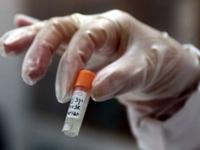-
Killing malaria parasites dead with anti-tank missile detection technology
Malaria kills 1.2 million people every year. Existing tests look for the parasite in a blood sample. The parasites, however, can be difficult to detect in the early stages of infection. As a result the disease is often spotted only when the parasites have developed and multiplied in the body. Scientists say that state-of-the-art military hardware could soon fight malaria: they have used an anti-tank Javelin missile detector, more commonly used in warfare to detect the enemy, in a new test rapidly to identify malaria parasites in blood.
-
-
Head of biosecurity advisory panel: Board is stalling as a result of slow fed policy work
The head of a federal biosecurity advisory committee says delays in the development of a national policy on institutional oversight of risky life-sciences research are the main reason the committee has been inactive for close to two years. The dormancy of the National Science Advisory Board for Biosecurity (NSABB) was pushed into the spotlight this week with the revelation that the eleven remaining original members of the 23-member board are being replaced. The board was set up in 2005 to advise the government on biosecurity and dual-use research, meaning research that can be exploited for harm as well as good.
-
-
New assay spots fake malaria drugs, could save thousands of lives
The World Health Organization (WHO) has estimated that about 200,000 lives a year may be lost due to the use of counterfeit anti-malarial drugs. Chemists have created a new type of chemical test, or assay, which is inexpensive, simple, and can tell whether or not one of the primary drugs being used to treat malaria is genuine — an enormous and deadly problem in the developing world.
-
-
Investigation finds serious violations of safety rules in CDC’s handling of deadly germs
An investigation by the U.S. Department of Agriculture’s (USDA) Animal and Plant Health Inspection Service(APHIS) conducted a review, from 23 June to 3 July, of the Centers for Disease Control and Prevention(CDC), and cited the agency for failing to follow proper procedures before and after the anthrax scare which led to the potential exposure of more than eighty lab workers to live anthrax viruses in June.APHIS found multiple violations of federal rules for handling dangerous microbes.
-
-
Following accidents, CDC shuts down anthrax, flu labs
Federal officials announced on Friday that they had temporarily closed the flu and anthrax laboratories at the Centers for Disease Control and Prevention (CDC) in Atlanta and halted shipments of all infectious agents from the agency’s highest-security labs. The announcement followed revelations about two recent accidents involving deadly agents at the CDC campus in Atlanta. Critics said the accidents highlighted an even greater danger – the efforts at some labs to create superstrains of deadly viruses (what is called “gain of function” research). “You can have all the safety procedures in the world, but you can’t provide for human error,” a critic of gain-of-function research said.
-
-
NIH employees not notified of smallpox virus vials found at NIH Md. campus

When Food and Drug Administration(FDA) workers the other day discovered decades-old vials of smallpox virus in Building 29A on the Bethesda, Maryland campus of the National Institutes of Health(NIH), NIH officials reached out to Montgomery County officials, Maryland health officials, and senior NIH executives.No notification, however, was sent to the roughly 18,000 NIH employees who work at the agency’s main campus.
-
-
Disagreement over use of experimental drugs in desperate effort to contain Ebola outbreak
The efforts to contain the largest Ebola outbreak in history have so far failed. International response teams, desperate to limit the toll of the fast-spreading epidemic in three West African countries, have been calling for the use experimental drugs or vaccines to try to stop the deadly virus. Many experts, however, including the scientist who led the work on a Canadian-made Ebola vaccine, say that using untested medications in the current West African outbreak could be disastrous. Other scientists disagree. The World Health Organization reports that the current outbreak, which is the first in West Africa, has so far infected 844 people, causing the death of 518 of them. This is double the size of the next largest outbreak, in Uganda in 2000, and this outbreak has just begun.
-
-
Smallpox vials found unguarded at NIH campus in Bethesda, Md.

Earlier this month workers clearing out a Food and Drug Administration(FDA) branch office at the National Institutes of Health(NIH) campus in Bethesda, Maryland, discovered vials containing smallpox, an eradicated agent feared for its bioweapons potential. The last smallpox samples in existence were thought to be held at tightly guarded facilities in Atlanta and the State Research Center of Virology and Biotechnologyin Novosibirsk, Russia. The vials appear to date from the 1950s.
-
-
CDC says anthrax infection “highly unlikely,” but reassigns bioterror lab chief
The U.S. Centers for Disease Control and Prevention(CDC) has advised some of its employees to stop taking antibiotics meant to fight a possible anthrax infection after preliminary tests suggest that it is “highly unlikely” those employees were exposed to live anthrax following an incident in June. Michael Farrell, head of the CDC bioterror lab, has been reassigned.
-
-
John Tull, whose 2002 bubonic plague illness raised bioterrorism fears, dies
In November 2002, John Tull, a New Mexico lawyer, was visiting New York when he was found to have bubonic plague. The discovery occurred a year after the fall 2001 anthrax attacks – which, at the time, were still unresolved – raising fears that Tull was a victim of bioterrorism. Those concerns were alleviated when it was determined that Tull’s case was linked to fleas in northern New Mexico, where Tull and his wife had a five-acre property outside Santa Fe. Tull, 65, died last week of cancer not related to the 2002 illness.
-
-
Better tools for tracing food-borne illness to source
Research could make it easier for public health investigators to determine if a case of food poisoning is an isolated incident or part of a larger outbreak. The study focuses on a test called multi-locus variable number tandem repeats variable analysis (MLVA). The test, which is increasingly used in the detection and investigation of foodborne outbreaks, analyzes specific sequences of DNA (called loci) that change rapidly enough over time to distinguish outbreak strains from other circulating strains of the bacteria but not so rapidly that connections could be masked by changes arising during the course of an outbreak.
-
-
Canadian dirt containing Kryptonite for superbugs
A fungus living in the soils of Nova Scotia could offer new hope in the pressing battle against drug-resistant germs that kill tens of thousands of people every year, including one considered a serious global threat. A team of researchers has discovered a fungus-derived molecule, known as AMA, which is able to disarm one of the most dangerous antibiotic-resistance genes: NDM-1 or New Delhi Metallo-beta-Lactamase-1, identified by the World Health Organization as a global public health threat.
-
-
Ebola epidemic in West Africa is “out of control”
Médecins Sans Frontières (MSF) has warned that the ebola epidemic in west Africa is “out of control” and will not be contained unless politicians, religious leaders, and aid agencies urgently improve their response to the unprecedented outbreak. The deadly disease is continuing to spread through Guinea, Sierra Leone, and Liberia, and the World Health Organization (WHO) says the outbreak has so far claimed 337 lives. WHO says that the confirmed, probable, or suspected cases stands at 528, with the disease identified in more than sixty locations across the three west African countries. The WHO said on Saturday that a failure by the authorities in Guinea to gauge the severity of the initial outbreak, and a subsequent relaxation of counter-measures, had created a “second wave” of the disease.
-
-
The “militarization of health care” threatening the health of local populations: experts
The surge in murders of polio vaccination workers in Pakistan has made headlines this year, but little attention has been devoted to the ethical issues surrounding the global health impact of current counterterrorism policy and practice. A new study traces the ways that the war on terror is incorporating medicine into warfare – what the researchers call “the militarization of health care” — threatening the health of local populations, increasing global health disparities, and causing profound moral distress among humanitarian and health care workers.
-
-
Forensic geographical profiling technique targets killer diseases

A mathematical tool used by the Metropolitan Police and FBI has been adapted by researchers to help control outbreaks of malaria, and has the potential to target other infectious diseases. The researchers have shown how the math that underpins what law enforcement calls “geographic profiling” can be adapted to target the control of infectious diseases, including malaria.
-
- All
- Regional
- Water
- Biometrics
- Borders/Immig
- Business
- Cybersecurity
- Detection
- Disasters
- Government
- Infrastructure
- International
- Public health
- Public Safety
- Communication interoperabillity
- Emergency services
- Emergency medical services
- Fire
- First response
- IEDs
- Law Enforcement
- Law Enforcement Technology
- Military technology
- Nonlethal weapons
- Nuclear weapons
- Personal protection equipment
- Police
- Notification /alert systems
- Situational awareness
- Weapons systems
- Sci-Tech
- Sector Reports
- Surveillance
- Transportation
Advertising & Marketing: advertise@newswirepubs.com
Editorial: editor@newswirepubs.com
General: info@newswirepubs.com
2010-2011 © News Wire Publications, LLC News Wire Publications, LLC
220 Old Country Road | Suite 200 | Mineola | New York | 11501
Permissions and Policies
Editorial: editor@newswirepubs.com
General: info@newswirepubs.com
2010-2011 © News Wire Publications, LLC News Wire Publications, LLC
220 Old Country Road | Suite 200 | Mineola | New York | 11501
Permissions and Policies
